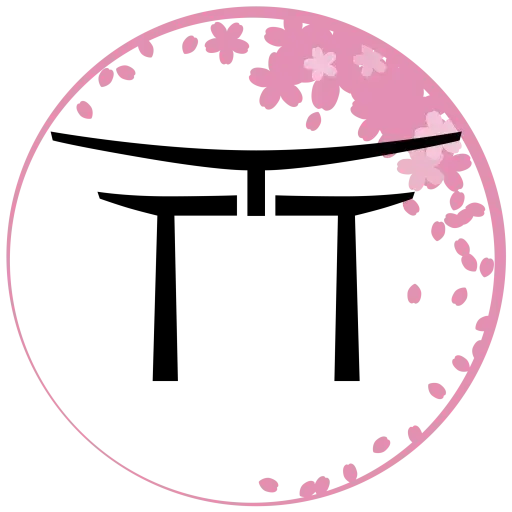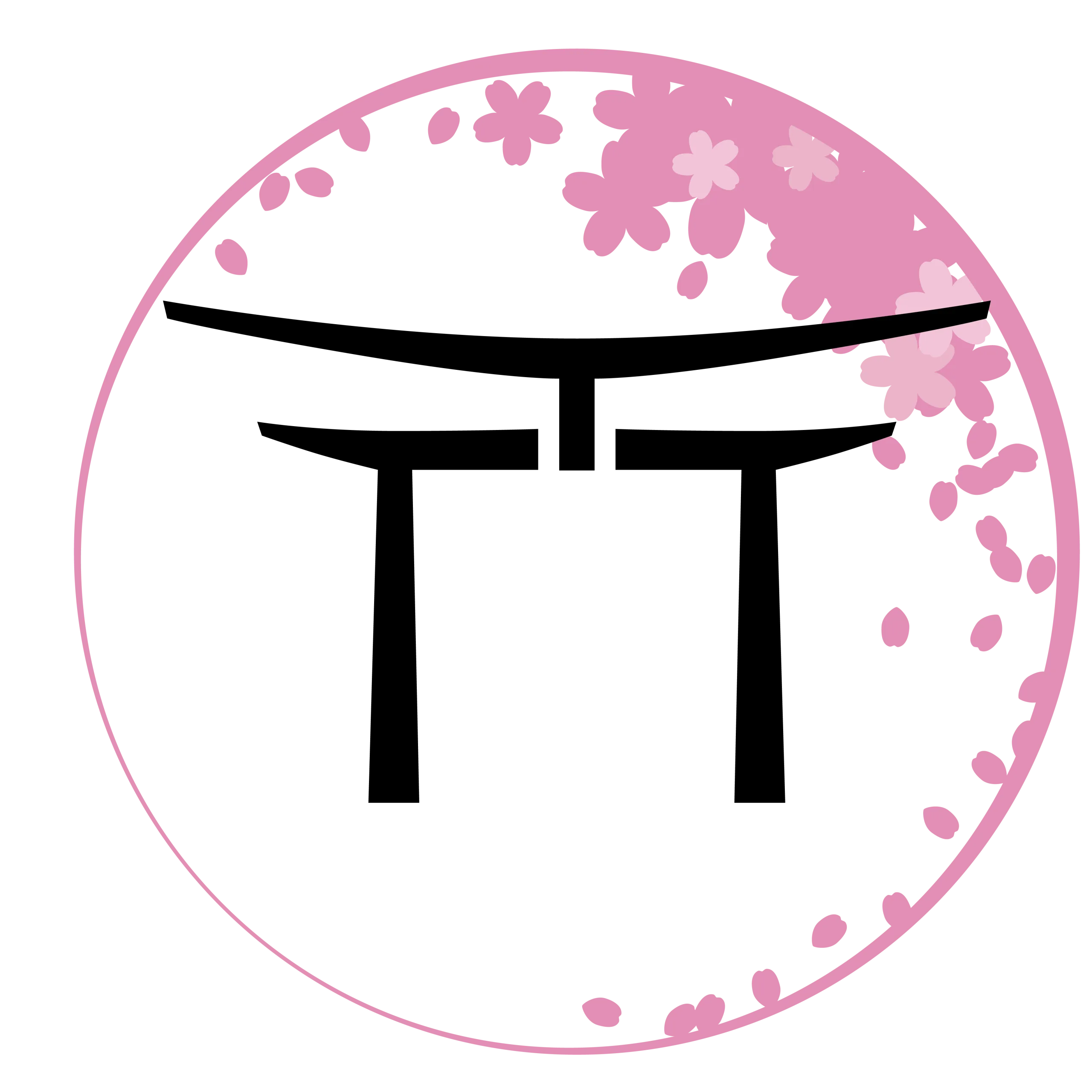An Overview of Baby Food in Japan
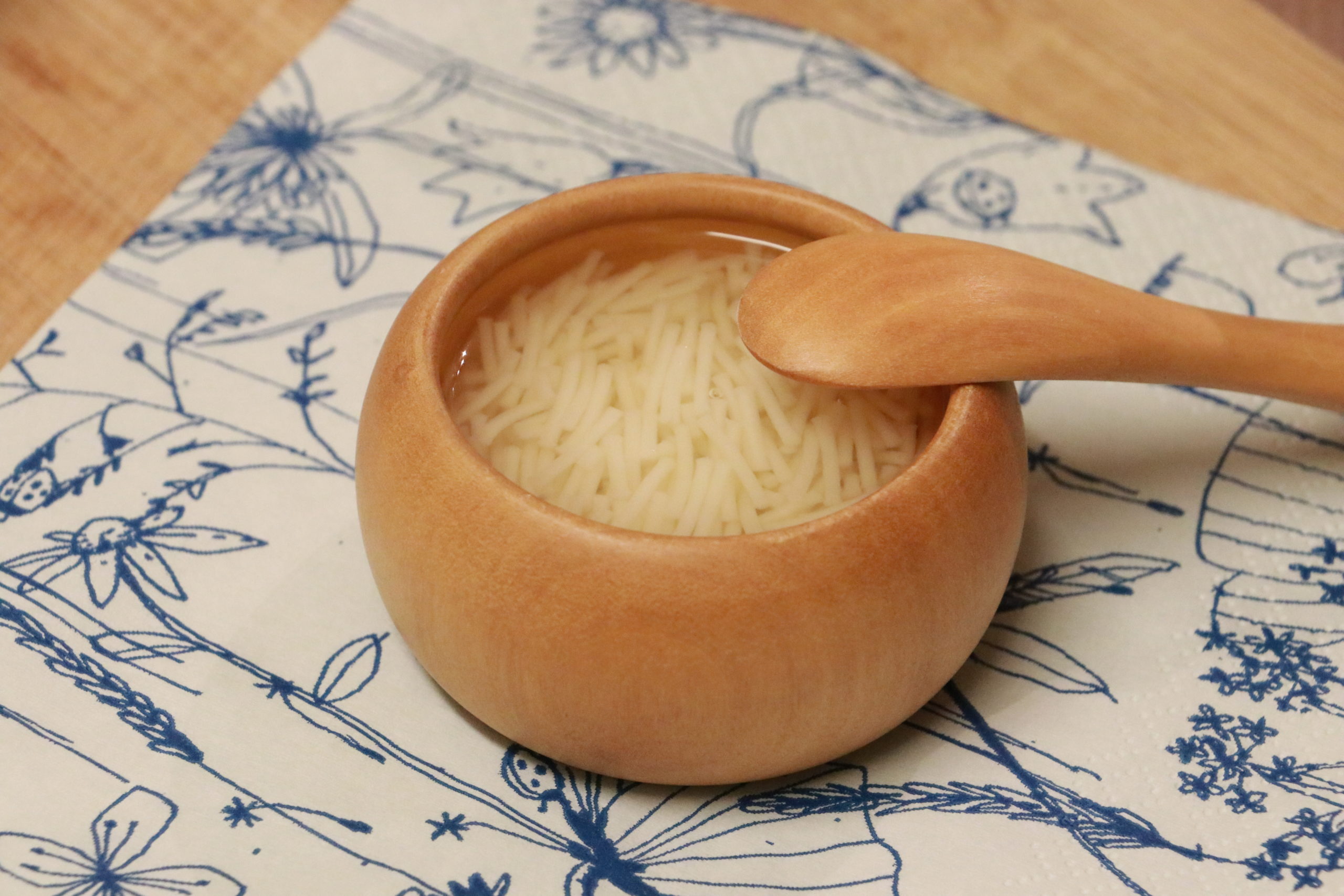
Last Updated on March 20, 2025 by Kay
This post may contain affiliate links, meaning I may earn a small commission on any purchases through those links at zero additional cost to you. Whatever I make goes to keeping this website running and I am forever grateful for the support. See my Privacy Policy for more information.
We all love food, so it’s an exciting time when your baby is ready for solids. But if you’re anything like me, there are probably dozens of questions going through your head.
What should you feed them first? How should you make it? How will the baby react? What kind of food will they like or dislike? What about allergies?
The answers to these questions become even fuzzier when you’re a foreign mom in Japan, so in this article, I’ll give an overview of baby food in Japan as well as my experience with introducing solids to my daughter and her food journey.
Keep in mind that I am not an authority in any way on this subject so I highly recommend doing your own research as well when it comes to how you want to introduce solids to your baby.
This article also contains information on where to buy baby food in Japan, so don’t feel pressured to make everything yourself by any means!
Table of Contents
- What Do Babies in Japan Eat?
- Baby Food Stages in Japan
- Ready-Made Baby Food in Japan and Where to Buy It
- Where to Buy Japanese Baby Food Outside of Japan
- 手作り Homemade Baby Food in Japan
- How to Make Komegayu (Japanese Rice Porridge) for Babies
- Helpful Feeding Supplies for Babies in Japan
- Books/Apps
- Wrap-Up: Baby Food in Japan
What Do Babies in Japan Eat?
Baby food in Japanese is called 離乳食(りにゅうしょく/rinyuushoku). In Japan, babies typically begin eating solids from 5 months, which is what we decided to do for our daughter. Of course, we looked for signs that she was ready, such as taking an interest in us eating, having good head control while sitting, and having lost her tongue-thrust reflex.
I was somewhat surprised to find out that one of the first things babies in Japan eat when they’re starting solids is komegayu or rice porridge!
Rice is a staple food in Japan, if not the most important food, so it makes complete sense when you think about it.
Babies also have dashi (very watered down), noodles (udon and soumen), as well as tofu and locally grown vegetables like kabocha. The kind of food given to babies depends on what stage they’re in during their weaning journey.
Baby Food Stages in Japan
There are four main baby food stages in Japan:
First Stage
ゴックン期 or 初期 (しょき/shoki)
This is the initial stage from 5 to 6 months of age and consists of pureed food that consists of one or two ingredients.
It’s usually recommended that babies at this stage start out with about a teaspoon of 10倍がゆ (米がゆ) a day, which is komegayu or rice porridge made using a 10 to 1 water to rice ratio and then blended or strained.
After that pureed vegetables, tofu, and fish can be introduced. As babies are still getting most of their nutrition from breastmilk or formula, you don’t need to worry too much about how much they’re eating.
Babies are fed about a teaspoon or tablespoon of puree, rice cereal, or porridge only once a day in this stage, usually in the morning. In this stage, as with all of the others, babies should still be given formula or breast milk after their meal(s).
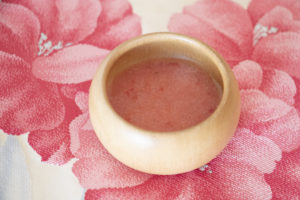
At 5 months my daughter would only eat if one of us was holding her on our lap and although there were some tears, she generally liked a lot of the food we gave her at this stage, especially the ready-made powdered 米がゆ (rice porridge) we started her out with and だし (she hated carrots, though, just like her father).
At 6 months we started giving her rice crackers that were appropriate for her age, but she had some trouble eating until she was 7 months and began to devour her senbei during her afternoon snack time.
We only gave her juice, specifically a vegetable and apple juice mix that we watered down, a few times before deciding to stop because although she liked it, in North America juice is not recommended for babies until the age of 1 due to the (natural) sugar content and empty calories.
Second Stage
モグモグ期 or 中期 (ちゅうき/chuki)
This is the middle stage starting from when a baby is 7 to 8 months old.
The food babies get during this period has a bit more texture but is still soft enough for the baby to mash with their tongue, like tofu, and chew using their gums. Unlike in the West, babies in Japan are usually only fed twice a day at this stage. (Of course, it’s completely up to you and your baby if you want to feed them three times a day.)
The following are approximate recommended serving sizes for babies at this stage according to Japanese books on baby food:
| Starch—one of: | |
| Rice porridge | 50-80 g |
| Bread | 15-20 g |
| Udon | 35-55 g |
| Potato | 45-75 g |
| Fruits | 5-10 g |
| Vegetables | 15-20 g |
| Protein—one of: | |
| Fish or Meat | 10-15 g |
| Tofu | 30-40 g |
| Egg yolk | 1/3 of a yolk |
| Dairy | 50-70 g |
I followed recipes to make my daughter’s food so I didn’t worry too much about whether she was getting exactly what’s listed above but I found that the recipes usually incorporated the recommended amounts.
I know some moms in Japan weigh the food and keep track of how many grams of what their baby ate but I didn’t do that at this stage and I still don’t.
I tried to balance my daughter’s daily meals in terms of providing some starch, fruits/veggies, and some sort of protein; however, she didn’t have much of an appetite so I didn’t force her to finish her food. If she turned away or cried when I was feeding her, then she was done and that was fine.
View this post on Instagram
A post shared by Tiny Tot in Tokyo (now in Kansai) (@tinytotintokyo)
By this stage, she was happily sitting in her Ingenuity Baby Base chair and starting to feed herself (kind of, we put the food in the spoon, put it in the bowl and she grabbed it and fed herself). She started eating little finger foods on her own despite not having any teeth until right before she turned 9 months old.
We introduced 麦茶 (むぎちゃ/barley tea) to her at the behest of her daycare. This was also the time that her likes and dislikes became quite pronounced. She did not like vegetables, in particular tomatoes, but interestingly she began to tolerate carrots.
She loved her morning oatmeal, though, especially with bananas, as well as her strawberry-banana “popsicle” for dessert that I made using a frozen NatureBond fruit feeder, and like her father, she would readily eat meat and rice.
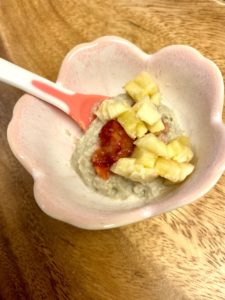
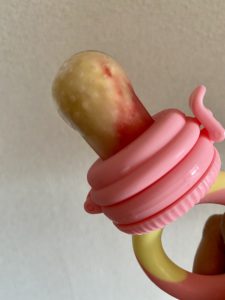
If you’re looking for a Japanese recipe for your baby at this stage, check out these recipes:
Third/Final Stage
カミカミ期 or 後期 (こうき/kouki)
The third stage is from 9 to 11 months and is considered the final stage before babies turn one. Babies are fed three times a day at this stage and can eat food as hard as a piece of banana, which they chew with their gums or their new little teeth. They are also starting to feed themselves at this stage.
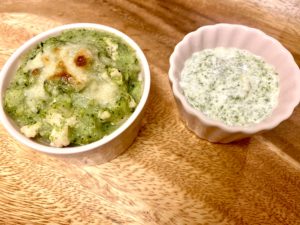
Recommended food servings per meal
| Starch—one of: | |
| Rice porridge | 90 g |
| Bread | 25-35 g |
| Udon | 60-90 g |
| Pasta | 40-65 g |
| Soumen | 50-75 g |
| Fruits | 10 g |
| Vegetables | 20-30 g |
| Protein—one of: | |
| Fish or Meat | 15 g |
| Tofu | 45 g |
| Egg yolk | 1/2 of a yolk |
| Dairy | 80 g |
Making lunches on top of everything when I was working from home was a challenge at times, especially since she liked to take a nap right before lunchtime and woke up HANGRY.
I’m not sure if it’s because she started daycare about this time but my daughter soon stopped enjoying food at home so much and became quite fussy during mealtime. She also pretty much stopped eating meat so we had to start being creative in trying to find out ways to get protein into her, such as cutting meat into really tiny pieces and mixing it in a dish she liked… And then she would spit it out.
Thankfully, she still quite enjoyed tofu, particularly in miso soup, so that was a common side dish for her, as well as tuna.
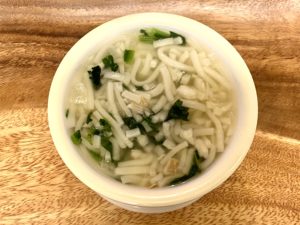
Despite Baby A having become a pickier eater at this stage, making meals at this stage was a lot more fun, though, since she was pretty much eating adult food in smaller portions and without sugar or salt.
I should also note that although it’s recommended that children start having cow’s milk in the following stage, パクパク期, my daughter’s daycare asked that she start having milk instead of formula during meals. (We continued to give her a bottle of formula before bed, however.)
If you’re looking for Japanese recipes for this stage, I recommend this chicken and tofu patty recipe as well as this recipe for okara pancakes.
Fourth Stage
パクパク期 (Paku paku ki)
This stage is from 1 to 1.5 years of age when babies officially become toddlers. Toddlers can eat food as hard as small meatballs and start to get a lot of their nutrition primarily from solid food.
From this stage, they no longer need to have formula or breastmilk with every meal and start to transition to whole cow’s milk.
View this post on Instagram
A post shared by Tiny Tot in Tokyo (now in Kansai) (@tinytotintokyo)
As mentioned earlier, my daughter was already drinking cow’s milk when she entered this stage and will easily down two to three cups in the morning (she chants, “にゅう、にゅう!” which is her attempt to say 牛乳 (gyuunyuu or milk).
She remained a fussy eater but started to surprise me by eating things like my oatmeal and toast with honey. (I think my daughter’s motto is that food tastes better if it’s not yours.)
I also started to make small bits of everything so that she would eat something. Her favorite foods are undeniably soup and rice, as well as banana and kabocha.
View this post on Instagram
A post shared by Tiny Tot in Tokyo (now in Kansai) (@tinytotintokyo)
I am worried about her not getting enough nutrition because we still struggle to get her to eat meat (although she likes wagyu shabu-shabu, because of course we ended up with a gourmet child) but according to her daycare teachers and her pediatrician, she’s doing fine.
Recommended food servings per meal
| Starch—one of: | |
| Rice porridge | ~90 g |
| Bread | 40-50 g |
| Udon | 105-130 g |
| Pasta | 75-90 g |
| Steamed ramen (中華蒸しめん) | 55-70 g |
| Fruits | 10 g |
| Vegetables | 20-30 g |
| Protein—one of: | |
| Fish or Meat | 15-20 g |
| Tofu | 50-55 g |
| Egg yolk | 1/2 to 2/3 of a yolk |
| Dairy | 100 g |
❀Read: Easy Baby and Toddler Recipes in Japan❀
When to Introduce What
There’s a lot of conflicting information about when to introduce certain foods to babies, such as between Japan and the West.
For instance, avocado, bread, mango, and blueberry are generally not recommended as introductory foods for babies in Japan; however, I’ve found differences in foods that are recommended for babies versus those not recommended even among Japanese books and apps.
It can be confusing but as your child’s mother, you know what’s best for them. Trust your instinct and if there’s a common theme in both countries when it comes to something you should not give your child (like honey), don’t.
Food Allergies
Allergies are pretty scary so it’s important to introduce new food gradually starting with very small portions and look for signs that your baby may be allergic, which include redness around their mouth, rashes, swelling (face, tongue, or lips), diarrhea, vomiting, or difficulty breathing.
In Japan, common allergens include:
- eggs
- soba
- milk products
- sesame seeds
- yam
- flour
- nuts
- fish/shellfish
- certain fruits like peaches
I don’t want to say too much about allergens because my daughter hasn’t experienced any allergic reactions to food thus far and I am also not an expert in any form so I don’t want to misguide parents.
Please take the time to do your own research and consult with your child’s pediatrician if there’s anything you’re unsure about. If your child is having a mild allergic reaction after eating something, such as a rash, take them to their pediatrician. However, if it’s serious (excessive vomiting, difficulty breathing), call 119 immediately for emergency services.
Ready-Made Baby Food in Japan and Where to Buy It
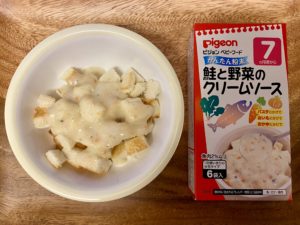
Although the taste isn’t always quite there, instant baby foods are great for busy working parents, for trips, for emergencies, and when you’re just exhausted and want to prepare something quick and easy.
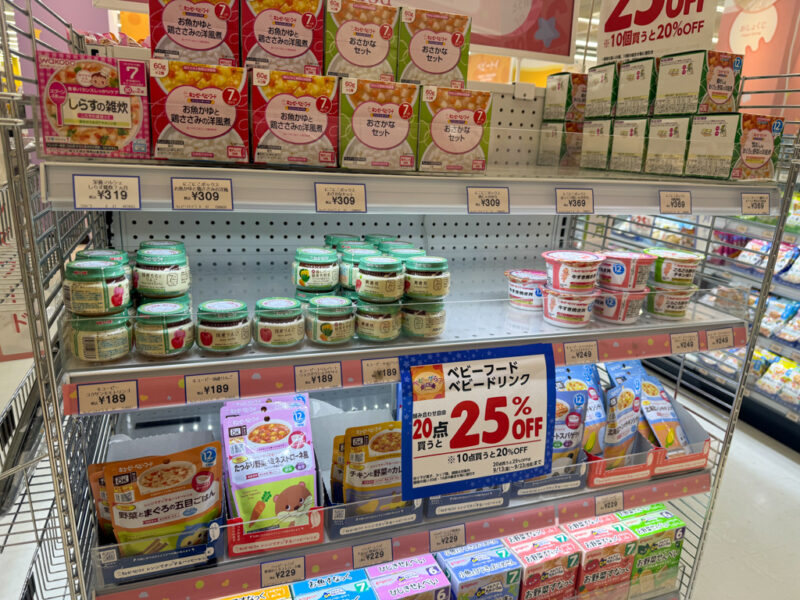
Here is a brief overview of the types of baby food you can buy in Japan:
- Bento or Jar type: These don’t need to be microwaved so your child can have it straight out of the box/jar. I see the jar type a lot at theme parks like Tokyo Disneyland or hotels in Japan.


- Powder type: These need to be mixed with hot water in a small container


- Pouch type: These can be microwaved in a container or boiled in the package


Don’t be afraid to use the Google Translate app on your phone to scan and read the information on the packages to determine what’s best for your baby.
Here is an example of how to read what’s on the front of the Japanese baby food package (ingredients are usually on the back):
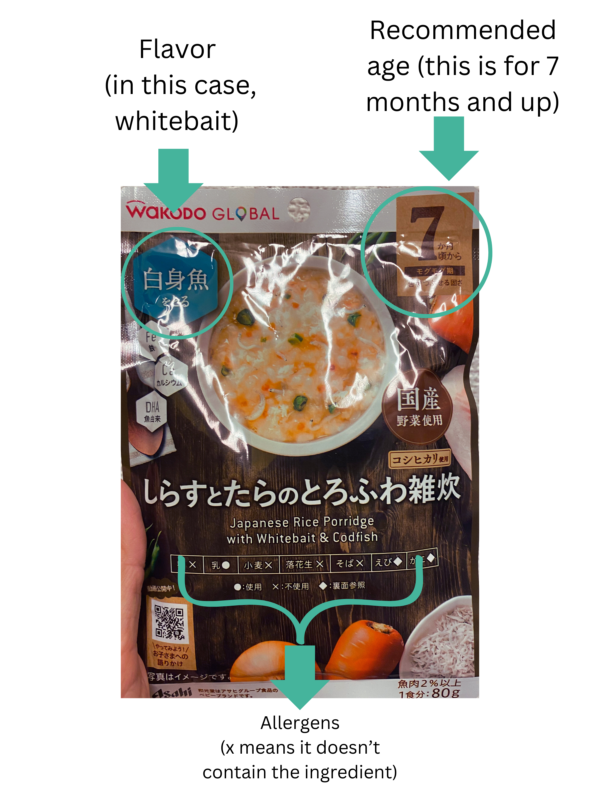
If you want to know more about Japanese snacks, like senbei, that you can start giving your baby from 6 months and up, then check out this article all about baby and toddler snacks in Japan.
You can buy snacks and baby food from grocery stores, drugstores, and baby stores in Japan, as well as online grocery delivery services like Oisix and even companies like Uber Eats and Wolt (Japan’s DoorDash).
For Uber Eats, select Grocery or Health. In this example, I’m using Health:
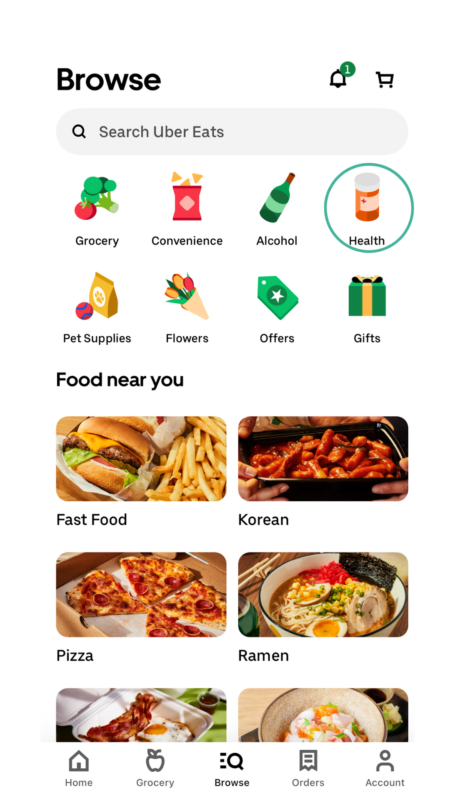
And then choose a pharmacy (or grocery store) nearby:
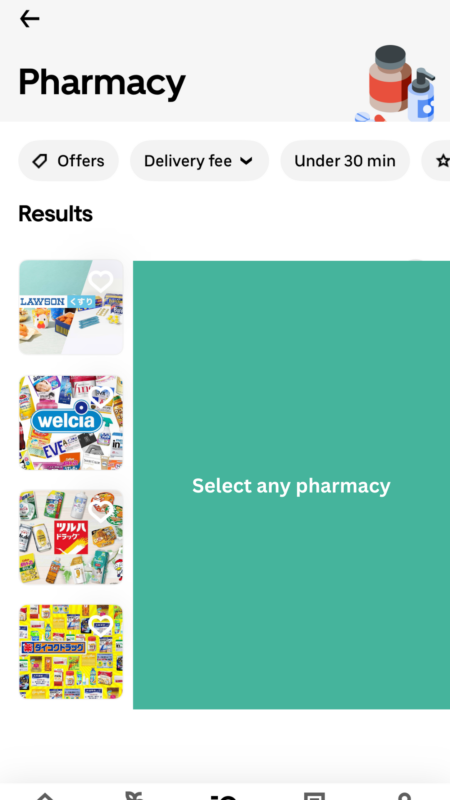
Enter “baby food” in the search bar and voila!
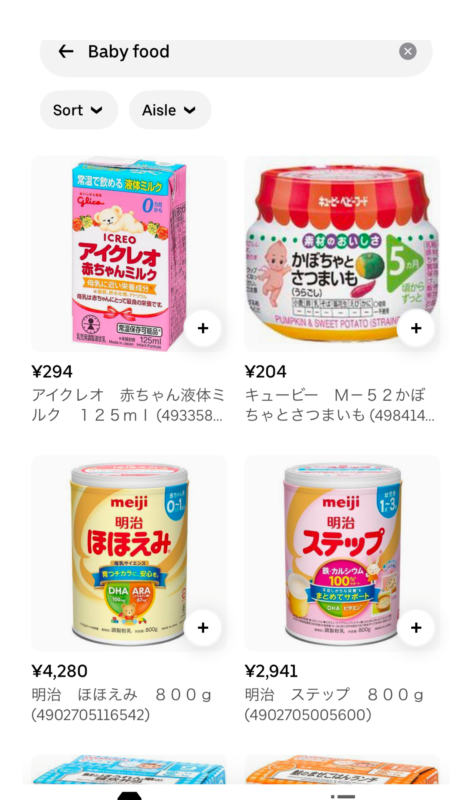
They will deliver the baby food straight to your door (or hotel).
If you’re interested in knowing about baby formula in Japan, read this article.
For Wolt, choose “Pharmacies” or “Toys, Games, & Kids”:
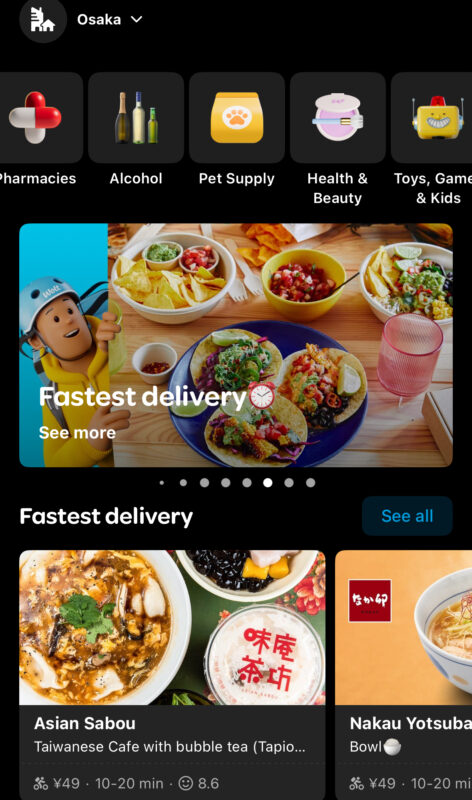
Then choose the closest store to you and select the items you would like to purchase.
My sister-in-law has ordered baby supplies using these apps and loves how convenient it is. And yes, they will deliver to hotels, too!
Where to Buy Japanese Baby Food Outside of Japan
Believe it or not, Amazon in the US has Japanese baby food!
Here are my top picks:
Baby Udon
Please only purchase Japanese baby food from authorized retailers.
手作り Homemade Baby Food in Japan
I prefer making baby food when I can. The taste is completely different, I feel better about knowing exactly what I’m giving my baby, and it’s much cheaper.
However, if ready-made baby food works best for you and your baby, there is absolutely nothing wrong with that! I know I will have days when it’s just easier to use something ready-made or we will be out traveling and that’s the best option, and Baby A has no complaints.
I initially bought a small set by Combi, pictured below, to make baby food because as a first-time mom, I had no idea what I was doing. This set has various graters to cut your baby’s food to a size appropriate for their age, which I really liked, and is small so it doesn’t take up that much room.


The Combi set is wonderful if you want to prepare a bit of fresh baby food on the spot (although at the 初期 stage, mashing the food with a fork would work just fine) but not that ideal if you want to make big batches of baby food to freeze.
Instead, I found a hand blender that I already had was perfect for pureeing steamed vegetables. A baby food cutter or scissors are also good to have on hand to cut noodles, meat, or vegetables for your baby into smaller pieces right in the bowl or plate.
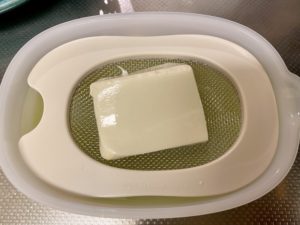
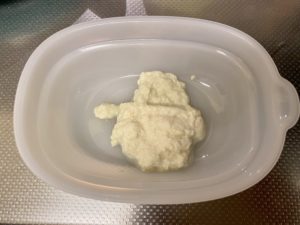
For the 中期 stage where food is harder with more texture, I used either the aforementioned Combi set, a mini food processor (I used a T-Fal one that I already had but you can get a compact manual one for 300 yen from Daiso), or just a good, sharp knife to dice food.
I actually liked using the Combi set the best when it came to harder vegetables and fruits like carrots and apples because everything was uniform but it also took ages to prepare a big batch.
How to Make Komegayu (Japanese Rice Porridge) for Babies
One of the most important staples I made and then froze for Baby A was 米がゆ (komegayu or rice porridge). This is prepared with different water-to-rice ratios depending on your baby’s solid food stage and how you will prepare the porridge.
(Note that these are not set in stone — if your baby seems like they’re ready for less strained or harder rice, then, by all means, go for it! My daughter was eating the same rice as us by the time she was 11 months.)
| Stage | Uncooked Rice | Cooked Rice |
| 初期 | 10 to 1 | 4 to 1 |
| 中期 | 7 to 1 | 3 to 1 |
| 後期 | 5 to 1 | 5 to 1 |
| パクパク期 | 2 to 1 | 1 to 1 |
There are different ways to make this and it’s especially easy if you have a rice cooker that already has an おかゆ mode. Mine did not so I simply soaked the uncooked rice in water for 30 minutes before turning on the rice cooker. You can also cook the rice as you usually do for yourself and then cook it in a pot on the stove afterward with the appropriate amount of water on low heat for about twenty minutes.
Turn off the heat, put a lid on the pot, and then let it sit for ten more minutes. 米がゆ for babies that are in the 初期 stage should be blended or strained. If you decide to freeze your 米がゆ and it seems chunky or dry after you warm it up, just add a bit of hot water and stir before giving it to your baby.
For those of you who are just starting out, here’s a helpful video by MAMA DAYS on how to make 初期 (first stage or 5-6 months) 米がゆ.
Freezing
To save time, I prepare batches of baby food and then freeze it. Afterward, all I need to do is pop a cube in a microwave-safe bowl and heat it up. Easy-peasy. Frozen baby food will also last for about three months, which makes life a lot easier.
I tried freezing purees using a normal ice cube tray at first as well as one specifically made for freezing baby food from the 100 yen store but it was a struggle involving lots of banging to get the cubes out.
This is why I decided to invest in two different baby food freezer trays, リッチェル Richell 調理用品 わけわけフリージング ブロックトレー and Edison mama 使う分だけ簡単に取り出せる, partially to see which one would be easier to use and also because they came in different sizes (25 ml and 15 ml, respectively). Both were pretty easy to use and the frozen baby food cube popped out with ease.
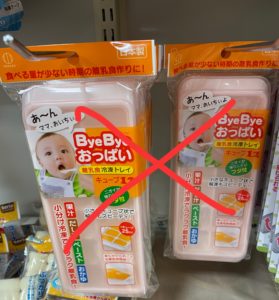
I found the Richell one to be the best, though, because you can just press down on the corner of a frozen cube and it’ll pop out right away. It also closes more securely, is light, and is very cheap since you get two trays in one package. I tend to take out the cubes all at once and then keep them in the freezer in a freezer bag to save space and so that I can use the trays again when I need to prep other food.
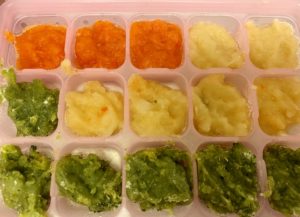
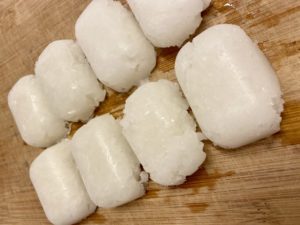
Keep in mind that some foods freeze better than others. One book I referred to called The Big Book of Organic Baby Food recommended freezing tofu. Big mistake. Tofu just does not freeze well and becomes quite chewy.
So what freezes well and what doesn’t? I found this list online to be the most accurate in terms of my experience.
One very easy way to get single-ingredient frozen baby food without having to make it is to use Co-op Deli. The cost is very reasonable, especially since you don’t have to go through the trouble of washing, steaming, pureeing and freezing. You’ll also get some freebies when you sign up, like milk and bread, as well as some baby food on your little one’s half- and first birthdays.
You can read all about Co-op Deli and their baby-friendly food here.
Helpful Feeding Supplies for Babies in Japan
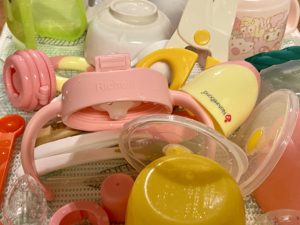
There’s a lot of gear available at baby stores for feeding your baby, some useful and some you could do without:
High chair or booster seat


During a Babies R Us Black Friday sale, we snagged an Ingenuity Baby Base chair for half-off and couldn’t be happier with our decision. It’s very easy to use and clean as there is no fabric to wash, all you do is wipe it down after meals.
It’s also versatile and you can continue using it as a booster seat when your baby becomes a toddler. Japanese homes also don’t have much room so having something that you can strap to a chair at the kitchen table is a space-saver in comparison to buying a high chair.
I read that it’s helpful to practice having the baby sit in the chair for a bit before feeding them solid food, and my daughter seemed fine during those trial runs. However, when it came time to feed her solids, she hated sitting in the chair for whatever reason. After about a month, though, she was perfectly fine and hasn’t had problems since.
Bowl and cutlery sets


We got a set by リッチェル Richell, which has been so useful in terms of spoons that Baby A doesn’t hate and microwave-safe bowls. I used this set every day when my daughter was a baby.
I tried a few different spoons from brands like Pigeon or Sophie’s Giraffe (the cute factor got me) but silicone Richell ones with plastic handles were the easiest for her to eat from and to hold when she just started to attempt to feed herself.
This set also comes with a cooling pack that you can put the bowls into if the food is too hot. When my daughter turned nine months and her portions increased, I started to use small bowls and plates that I already had around the house. I still used the Richell bowls, though, to heat up frozen baby food.
![[10mois(ディモワ)] mamamanma(マママンマ) プレートセット ピンク 18151006](https://m.media-amazon.com/images/I/31c2YjjX1JL._SL250_.jpg)

I also invested in this lovely plate set by the brand 10mois. These cute plates are durable, having survived multiple washes in the dishwasher and being flung to the ground by my daughter; microwave-safe; composed of biomass plastics, such as bamboo; and best of all, look absolutely adorable. The utensils that come with this set are also very easy to use.


We also got the matching silicon placemat, which has helped immensely with messes as it catches food that otherwise would have fallen on the baby or the floor. Keep in mind, though, that your child might find it fun to peel the mat off the table (our daughter usually stops after a few warnings).


I would also recommend getting this spoon and fork set from Richell, which is really ergonomic for babies learning how to feed themselves.
Sippy cups/Straw cups


Sippy cups or straw cups are essential when it comes to weaning your baby off the breast or bottle. There are a lot out there and I imagine different babies have different preferences. We only tried one, which was a Richell sippy cup, and we liked it so much that we ended up buying another one.
This Richell sippy cup comes with three different valve/straw attachments for each stage (5, 7, and 8 months). Although she protested at first, by 7 months Baby A was able to drink from it very easily and hold it herself. It’s also very easy to clean and leak-proof, not to mention comes in adorable designs.
Baby food freezer trays



As mentioned earlier, 100 yen store ice cube trays aren’t bad but if you’re planning on freezing baby food, make your life easier by buying one specifically for baby food (like リッチェル Richell, pictured above, or Edison mama).
Bibs
![[ベビービョルン] スタイ ベビー 4580370187496 単品 パウダーピンク 1個 (x 1)](https://m.media-amazon.com/images/I/31-XGVNnMxL._SL250_.jpg)

I tried both soft and hard plastic/silicone bibs and found the latter to be the easiest to clean. I got one hard plastic bib for Baby A from Babies R Us for 100 yen during their Black Friday sale but I also couldn’t help but to also splurge on not one but two BabyBjorn ones because they are not only incredibly cute (little pearls always get me) but also durable and wide.
Soft plastic bibs (apron bibs) do have their merits, though, as they are compact and easy to tuck away or take with you when you go out with your baby. These bibs are also good if your baby likes to knock their hard plastic bib around as a friend of mine experienced with her child. When your baby is a bit older and they’re ready to try to start feeding themselves (and you’re ready for the inevitable mess), you may want to invest in a bib with long sleeves so that their clothes don’t get completely ruined.
Fruit feeder


These are great for feeding babies fruits, whether fresh or frozen. I got one from a brand called NatureBond and have been quite happy with it so far. The box comes with two feeders that have three different sizes of silicone teats each, which you can fill with whatever fruit you think your baby will like.
Baby A likes strawberries and bananas, so I stick those inside and then freeze it so it’s like a popsicle (I put the feeder inside of a freezer bag to prevent freezer burn). As she’s teething, I think she likes the cool sensation on her gums. It’s also very easy for her to hold and feed herself.
Newspapers/flyers
Babies are toddlers are messy when they eat, especially when exploring their food and learning how to feed themselves. This is why it’s essential to have newspapers or flyers on hand to put on the floor and then throw away so that you have less to clean after a meal. You can also get something reusable like a picnic mat and just wipe it down but I just don’t have time for that and since I was getting a bunch of flyers from CO-OP anyway, I decided to put them to use. It was an excellent decision.
A shield
Okay, this is partially a joke but I think it’s useful to have something on hand to block bits of food from hitting you in the face if your baby likes to blow raspberries with a mouthful of food or just use the spoon to fling their meal at you 🙂 I use a small plastic cutting board or a magazine I don’t care about anymore but if you have any suggestions, let me know by commenting below!
Books/Apps
There are a lot of books on baby food and I started my baby food journey with one Japanese book, one English book, and one app.
I bought the Japanese book,フリージング離乳食, after looking through it briefly at a bookstore because I felt like it was the easiest to follow with lots of illustrations (I’m a visual learner). I wasn’t a fan of the freezing methods listed in the book; however, I liked that it had recipes for each stage that used similar ingredients. This way I could freeze a few things in advance and then make various recipes for my daughter throughout the week.
The book also has a lot of helpful information about each stage and allergens and addresses some common questions and concerns parents may have when it comes to feeding their baby solid food. One thing to note, though, is that the book only provides recipes for one meal a day, which I’m not a fan of now that my daughter is in the 後期 stage and needs to be fed three times a day.
The English book, The Big Book of Organic Baby Food, was a recommendation from moms in my July 2019 Bumper group. As the book is written by a registered dietician, it has a lot of useful nutrition information and is great to refer to when my daughter was starting with simple purees. However, I didn’t find myself making anything for the 6-8 month combination puree stage. I like how healthy the food is but the main problem with this book is that it’s hard to get some of the ingredients easily at a typical grocery store in Japan, like artichokes, kale, or fruits if they’re out of season.
My favorite resource thus far has been the ninaru ステップ離乳食 app because I can easily look up recipes based on an ingredient I want to use. I go into more detail about this app in my post on helpful Japanese baby apps for parents so if you’re interested, please check it out!
Since then, I started using another recipe book called はじめてママ&パパの すくすく幼児食 by Babymo. This book is packed with recipes that you can use from when your child is one all the way to age five! It also addresses common eating issues like not liking a particular food such as meat and what kind of meals to make that might help overcome a fussy eating stage. Best of all, you can get this book for FREE on Kindle Unlimited.
There’s also a 離乳食 recipe book by Babymo for babies who are just starting out eating solids.
Overall, I prefer using Japanese recipes over Western ones as the ingredients are easily available and I was able to get my daughter accustomed to food that she would eventually need to eat in daycare.
Wrap-Up: Baby Food in Japan
I hope this guide has been useful and please let me know your thoughts or if there’s anything else you would like to see in this article or upcoming ones.
Happy feeding!
